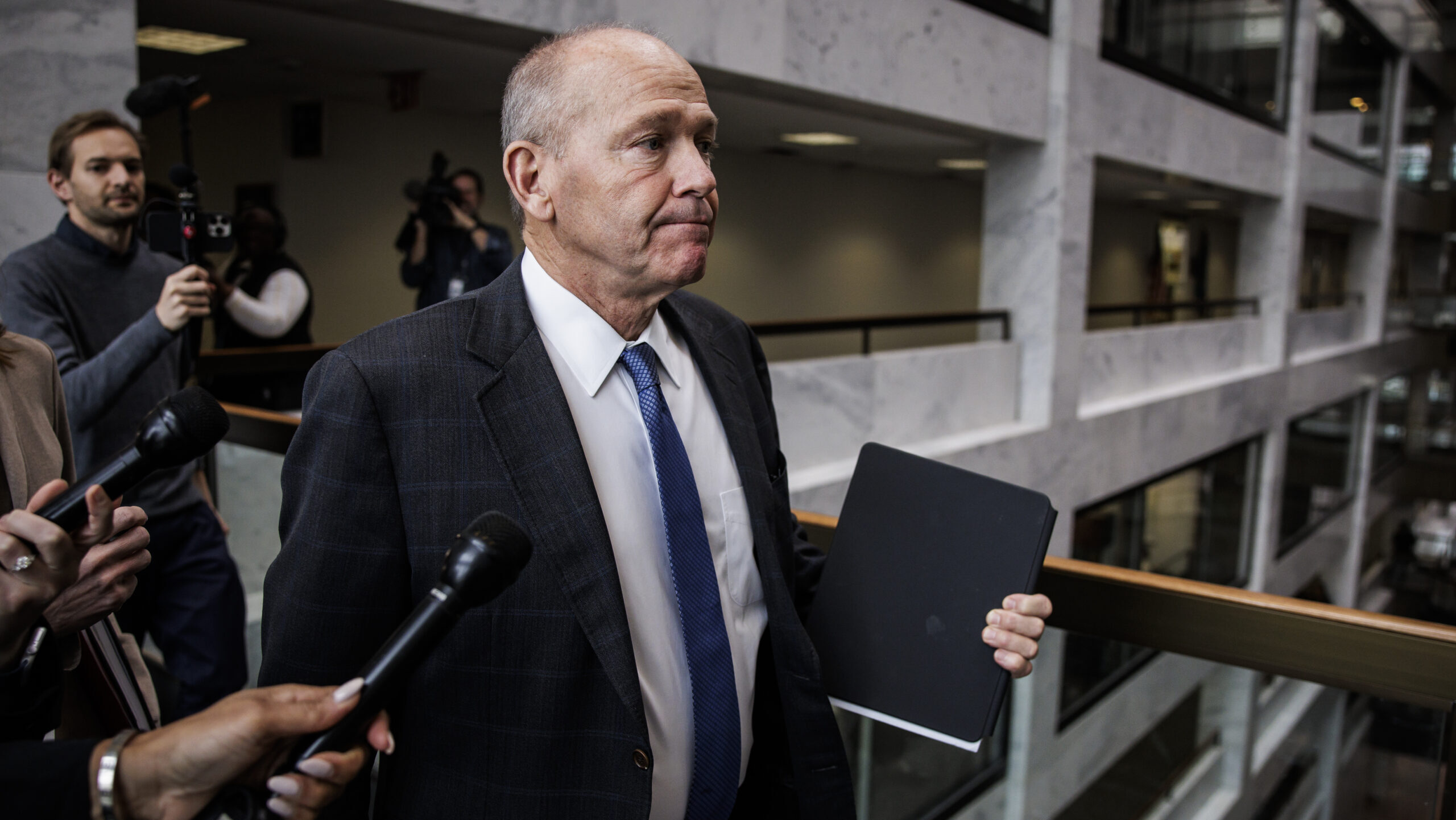
Streaks in the sky form at sunset behind the U.S. Capitol Building on November 13, 2019 in Washington, DC. (Photo by Mark Makela/Getty Images)
When the Pentagon’s fiscal 2025 budget request was rolled out earlier this month, it became very clear that the Pentagon was hoping that Congress would provide relief from budget caps that, defense leaders said, forced tough choices. In a new op-ed, John Ferrari and Charles Rahr of the American Enterprise Institute argue that if lawmakers don’t bail out the department, real changes are going to have to come.
Despite being hemmed in by the spending caps under the Fiscal Responsibility Act (FRA) for 2025, forced to function under continuing resolutions for nearly half of this fiscal year, and still waiting on a sorely needed supplemental, the Pentagon seems to be the one institution in America that believes Congress will bail them out.
That can be the only rationale for why the Pentagon’s budget once again does not match either its strategy, or the world that we are living in. And to be fair, there is reason for the department’s belief, as the gamble of relying on Congress to pass supplementals and add funding to the unfunded priority lists has worked in the past. But the stakes have scarcely been higher than today, and if Congress — barely able to function even before we get into the teeth of a brutal presidential election — doesn’t provide a bailout, the military may be in serious trouble.
It’s a dangerous place for the department to be, and it should serve as a wakeup call. Rather than relying on the Hill to save them from self-inflicted wounds, department leaders should be considering an alternative for current needs under budget constraints: a hard pivot away from expensive manned systems in favor of cheaper unmanned ones that can provide mass and capability for near-term conflicts.
First, let’s consider the Navy. Next year, the service is planning on purchasing six ships — while retiring 10 early. Couple that request with the Navy’s new shipbuilding plans over the next three decades and it’s clear that the service isn’t growing fast enough. In truth, it may now be time to accept that it cannot grow fast enough. Both plans presented by the service, one budget-constrained and the other in line with the Navy’s fleet target for implementing the National Defense Strategy (NDS), would drop the service to 280 ships by 2027. The budget-constrained plan would peak at 348 ships in FY42, nearly forty below the Navy’s NDS-aligned target of 381 ships. The other plan would first hit this target in FY42 and FY43, and later from FY52 to FY54.
Given congressional dysfunction and budgetary pressures, it’s hard to imagine that the NDS-aligned plan will be implemented. Meanwhile, China already possesses a fleet of 370 ships, according to the Pentagon’s latest China Military Power Report. Given the current state of shipbuilding, it may be time for the Navy to pivot away from the unlikely-to-be-obtained future fleet sizes and instead immediately invest in greater numbers of unmanned, attritable platforms, on the order of thousands. Scale matters.
Next, the Air Force. The service is seeking to shed roughly 250 aircraft, a mix of F-15C/Ds, A-10s, F-22As, and other fixed-wing and rotary platforms. At the same time, it is seeking to purchase just 91 aircraft, once again setting the Air Force down the long, flawed road of “divest-to-invest” in the hopes of harnessing savings for investment in next-generation new builds. The Air Force seems to be betting that more funding will come and it will be able to buy back these aircraft (the decision to halve the buy of the MH-139 helicopter, which members of Congress plan to use for their own transportation, is only the most obvious example).
An alternative approach could be to dramatically scale back buys of its highest cost aircraft, the F-35, and instead invest in greater numbers of unmanned aviation platforms, up to tens of thousands. Scale matters.
Despite receiving the smallest slice of the three departments, the Army provides some bright spots in an otherwise dismal FY25 budget request. In putting more dollars to procurement ($23.3B to $24.4B) and fewer dollars to research and development ($15.7B to $14B) compared to its FY24 request, the service seems to be getting the message that investing in the notional capabilities of tomorrow makes little difference for readiness today.
However, the Army’s procurement of weapons remains too small (e.g. just 30 upgraded Abrams) to fight an extended war, something the American public would not likely understand. Additionally, the service wasn’t spared of cuts to its most valuable asset: people. The administration is seeking an active-duty end-strength of 442,300, an over ten thousand person cut from FY23 and a clear recognition that the already tough recruiting environment is worsening. Russia is looking at this smaller force and has to be thinking about how the US Army would fair in a long, grinding, multi-year ground war. The Army should continue to jettison programs in development and instead buy more munitions and weapons, on the scale of hundreds of thousands. Scale matters.
As our colleagues Mackenzie Eaglen and Todd Harrison note, it didn’t have to be this way. The Pentagon could have submitted a budget above the caps set by the Fiscal Responsibility Act and one that is fit to the strategy. That would have required leadership from the Executive Branch of government. But, in failing to do so, the Pentagon is betting on Congress to come to its rescue. If that rescue mission doesn’t pan out, then DoD may just have to pivot from large, expensive platforms to unmanned, attritable platforms bought at scale.
Retired US Army Maj. Gen. John G. Ferrari is a senior nonresident fellow at the American Enterprise Institute think tank. Ferrari previously served as a director of program analysis and evaluation for the service. Charles Rahr is a research associate at the American Enterprise Institute.












